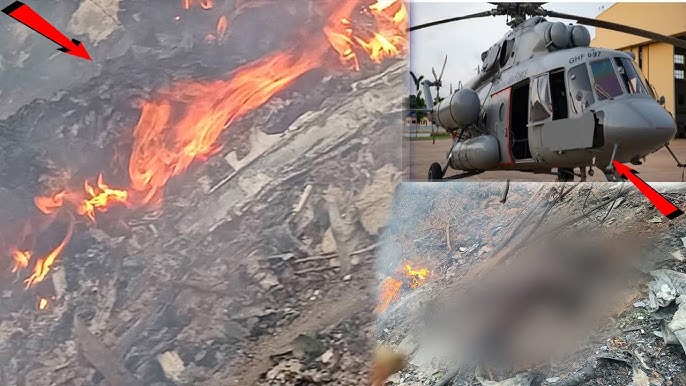Helicopter Crash Exposes Gaps in Ghana’s Search and Rescue System – Bright Simons Raises Tough Questions

The tragic crash of Ghanaian military helicopter GHF 631 earlier this week has triggered resh scrutiny over the country’s ability to respond swiftly and effectively to aviation emergencies.
Public policy analyst and Vice President of IMANI Africa, Bright Simons, has shared detailed concerns about what he describes as a “complete breakdown” in Ghana’s Search and Rescue (SAR) system, pointing to both technical failures and deeper policy weaknesses in the country’s military preparedness.
The Investigation and a Missing Scope
Simons said his first step was to determine the scope and terms of reference of the Board of Inquiry established by the President to investigate the incident. However, sources were “tight-lipped,” and no provisional memoranda detailing the questions investigators intend to address were available.
While he urged the public to await the official report, he noted one detail he is especially curious to see explained how Ghana’s elaborate SAR protocol failed to activate as designed.

How the SAR System Should Have Worked
A military aircraft carrying Very, Very Important Persons (VVIPs) would normally be fitted with an Emergency Locator Transmitter (ELT) beacon that activates on crash impact. The beacon broadcasts on a 406 MHz frequency, locking onto the global Cospas-Sarsat satellite network, which is coordinated internationally and linked to Ghana’s Rescue Coordination Centre (RCC) in Accra.
This signal should then alert multiple Ghanaian institutions, including NADMO, the Ghana Maritime Authority, 37 Military Hospital, and the National Ambulance Service.
Ghana also claims compliance with the Global Aeronautical Distress and Safety System (GADSS) and has capabilities for Autonomous Distress Tracking (ADT), meaning a distress signal should have been transmitted automatically.
What Actually Happened
According to Simons, “this elaborate mechanism, so perfect on paper, simply failed to fully activate.”
Backup systems also appear to have failed. In the event of an ELT malfunction, a Personal Locator Beacon (PLB) can emit a local homing signal on 121.5 MHz, triggering the Air Force’s “flight following and tracking” protocol. Given the earlier loss of radar contact and the helicopter’s failure to arrive as scheduled, aircraft should have been scrambled to locate it immediately.
Instead, hours passed before trained personnel reached the crash site at Adansi Brofoyedu. In the meantime, untrained locals led initial rescue efforts in an uncoordinated scene broadcast live on social media.

Policy Weaknesses in Military Infrastructure
Simons argued that the failures were not just operational but also structural. Ghana’s Air Force has three main bases, that’s Takoradi, Accra, and Tamale with nearly all aircraft based in the two coastal cities. The central belt, including the crash location, has no functional airbase with aircraft.
The area falls under the Bui Tactical Command, which he described as “a literal backwater outpost” lacking functional aircraft and even reliable internet. Yet, instead of strengthening such commands, the military plans to spend almost GH₵700 million between 2025 and 2027 on new “forward operating bases,” some of which may be poorly equipped.
Simons suggested Kumasi would be a better choice for strategic positioning, given its existing infrastructure. From Kumasi, rapid response, search, and rescue operations in the Obuasi area could be completed within the one-hour response window stated in Ghana’s SAR manual.
Lost Time, Lost Opportunities
Instead of a rapid response, it took the military over three hours and in reality closer to seven to reach the crash site after the helicopter was declared missing. By then, any survivors would likely have succumbed to their injuries, and key evidence had been disturbed or lost.
The Bigger Problem: No Audience for Policy
Simons believes the root issue lies in Ghana’s lack of public and political focus on policy accountability. “In Ghana, all the emphasis is on political accountability. There is practically no audience for policy accountability… until there is system failure,” he noted.
He argued that this is why critical issues like the distribution of military assets, SAR preparedness, and the capability of tactical commands rarely receive sustained public attention, even though they have life-and-death consequences in moments of crisis.
A Call for Change
The IMANI Africa Vice President is urging the creation of a strong public audience for policy discussions. “If we had serious policy debates in this country, some of these glaring weaknesses could be addressed before disaster strikes,” he said.
As Ghana awaits the official inquiry’s findings, Simons maintains that the helicopter crash should be a turning point for rethinking how the country positions its military resources and how seriously it treats its own emergency response protocols.




